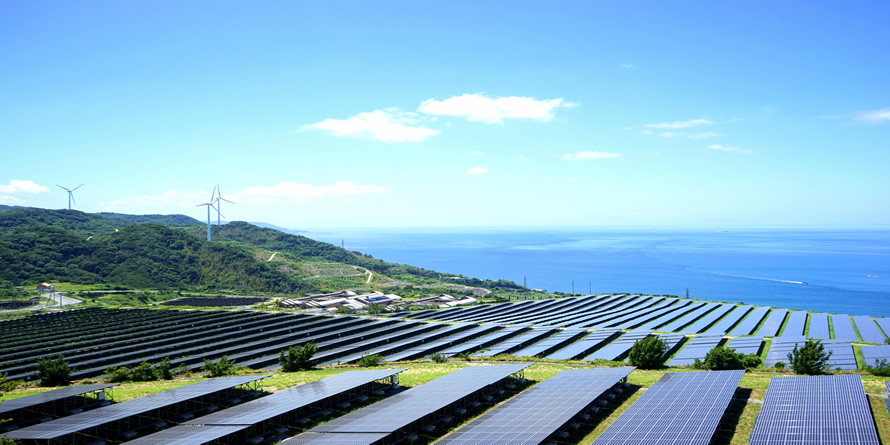Posted on: 03/09/2020
Following on from our recent webinar, hosted in collaboration with All-Energy, Head of Sales for Smart Generation, Angus Widdowson shares some of the key themes emerging from our discussion on the future energy mix, and what needs to be done to reach the decarbonised, decentralised, digitised system.
The first webinar of our Energy Entrepreneurs Virtual Event Series took place on the 20th August, with a great level of interest as more than 400 registrants signed up to attend. The major focus of the session was to assess what we think the future energy system should look like and what environment needs to be created in order for the vision to become reality.
In this blog, I’ve detailed just some of the fascinating insights which emerged from the debate had by the panel of experts alongside me focused on the independent generation sector:
“Too often, discussion about renewables are theoretical, about dates far off into the future… This is a crisis; we need to act and that’s why discussions about 2030 are more meaningful than net-zero by 2050 at this moment in time” George Baxter, Director of Development, GreenPower
Whilst net-zero as early as possible has to be the ultimate goal, it’s absolutely true that action needs to be taken now. Just recently, National Grid’s future energy scenarios called for at least 1.4GW of new solar and 3GW of new wind to be built every year in order to meet targets. The opening up of the next CfD auction to both solar and onshore wind is certainly a step in the right direction, although the more pressing issue is the need for the planning system to gear up for delivery at scale and volume in a zero subsidy commercial environment. Such reform is essential when you consider that reaching such targets will require projects will need to use the latest, most efficient machines. The current planning system simply cannot facilitate this whilst it remains focused on subjective matters like landscape, instead of prioritising the decarbonisation of the UK energy system.
“According to a recent report from the Scottish Government, Business Rates account for (on average) just under a quarter of a hydropower project’s total turnover” Penelope Carruthers, CEO & Founder, Carruthers Renewables
Often, talk surrounding the funding of renewables do seem to revolve around subsidy support, but it’s important to realise the intricacies of each individual project. Where business rates typically make up around 3% of a solar project’s turnover and up to 5% of a wind project’s turnover, this punitively high level of taxation makes it extremely challenging for new hydro power projects to deploy. In a country such as the UK, where the potential for hydropower is so high, future policy discussions most certainly need to address this issue in order to ensure sufficient diversity in the UK’s overall energy mix.
“Global investment in renewables was actually up 5% in the first half of 2020 – defying COVID-19” Robert Hokin, Managing Partner, Greenbackers Investment Capital
This was such a great stat to see and does show that even during a time of unprecedented disruption, the green economy remains strong and opportunities to develop new projects still remain. It’s also been really pleasing to see a new narrative surrounding a ‘green recovery’ emerge, with market commentators suggesting that the renewable transition will be key in helping economies all over the world return to growth status as we learn to live with coronavirus. The UK government has even held roundtable events with representatives from the energy sector in recent months, in order to see how the UK’s economic recovery can be as clean as possible, with special attention paid to how government can help business across all sectors to decarbonise their operations and the potential job creation associated with the ramping up of the renewables sector.
“We now need to be more flexible in the way we operate and run merchant wind and solar plants… both in responding to signals from the system operator and, where we can, in making them more dispatchable – one of the most interesting developments we’ve seen in this area is the growth of solar & storage hybrids, particularly in the US where they are now starting to displace gas peakers in some regions” Stuart Lunn, Commercial Director, RES
As more and more renewable generation is welcomed onto the system, periods of high-load factors present a new scenario for the System Operator to manage (through solutions such as Optional Downward Flexibility Management) whilst project owners looking to maximise their revenues should also consider the impacts. In recent times, industry has become aware of the potential for ‘revenue cannibalisation’ in future, whereby gluts of wind or solar power could theoretically lead to so much extra supply that wholesale prices depress, leading to lower value capture levels for all such generators. However, when such projects are co-located with storage, this gives generators the opportunity to smooth out their export profile, push generation into time periods to meet peak demand and ultimately provide National Grid with a greater range of services such as frequency response, or participation in the Balancing Mechanism, leading to a greater range of revenue opportunities.
If you enjoyed this snapshot of the All-Energy webinar, you can click here to watch the full recording via our Energy Entrepreneurs Virtual Event Series page.
You can also follow this link to sign up for the next session: “Financing Renewables – In Pursuit of Net-Zero”. Head of Renewable Origination, Rob Luke will be joined by Peter Bolton, Foresight Group; Monika Paplaczyk, Thrive Renewables; and Simon Hamlyn, BHA. The panel will discuss how innovative PPA structures, merchant revenue models and maximising revenue streams across markets can all be part of making viable business cases for new projects.

 United States
United States Australia
Australia






